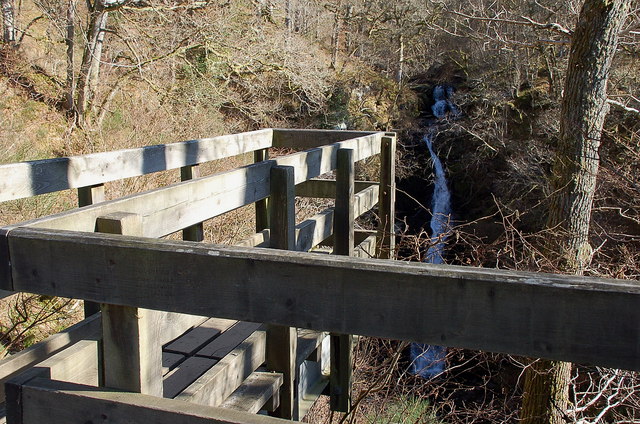

Excavation suggests that the broch was burnt and levelled. The structural viability of the building was afforded by the quality of the local stone as a building material, naturally breaking into even, flat slabs, though elsewhere the quality of stone may not always have been a consideration. It is the only confirmed example where its scale and construction suggest a full broch tower, with the narrow entrance and battered external wall face associated with the class across Scotland. The discovery of a demolished broch within Castle Craig fort (MPK1399 Poller forthcoming) is significant. The central hearth at Black Spout during the 2008 excavation ©️ Perth and Kinross Heritage Trust The first lowland example has recently been identified within Moredun Top fort, Perth (MPK5232 Strachan et al forthcoming).

A number of these sites appear to have been reused, if not reoccupied, in the early medieval period (Strachan 2013, 36–37). The Black Spout was occupied between the late 3 rd and late 2 nd centuries BC. While Stewart ( 1969) and Taylor ( 1990) suggested the sites as an early medieval phenomenon, excavations at Aldclune confirm construction of one between the 1st and 2 nd centuries BC and the other between the 2 nd and 3 rd centuries AD, with two phases of occupation at each site (Hingley et al 1998). Six have been excavated: Borenich (MPK1248 Watson 1915), Litigan (MPK413 Taylor 1990) and Queen’s View (MPK1212 Taylor 1990), two at Aldclune (MPK3 Hingley et al 1998), and the Black Spout, Pitlochry (MPK1607 Strachan 2013). They include some architectural features found on brochs, such as raised floors, and intramural cells and stairs. In the northern periphery of the ‘lowland group’ for brochs (MacInnes 1985 Romankiewicz 2011), the uplands west of the River Tay contain a notable concentration of massive, stone-walled monumental roundhouses of around 12–18m internal diameter, with a variety of options for internal construction.

Clyde Valley Archaeological Research Framework.Perth and Kinross Archaeological Research Framework (PKARF).Scotland’s Islands Research Framework for Archaeology (SIRFA).Highland Archaeological Research Framework (HighARF).South East Scotland Archaeological Research Framework (SESARF).Regional Archaeological Research Framework for Argyll (RARFA).

Boyne to Brodgar: Making Monuments, Creating Communities.Scottish Network for Nineteenth-Century European Cultures.


 0 kommentar(er)
0 kommentar(er)
